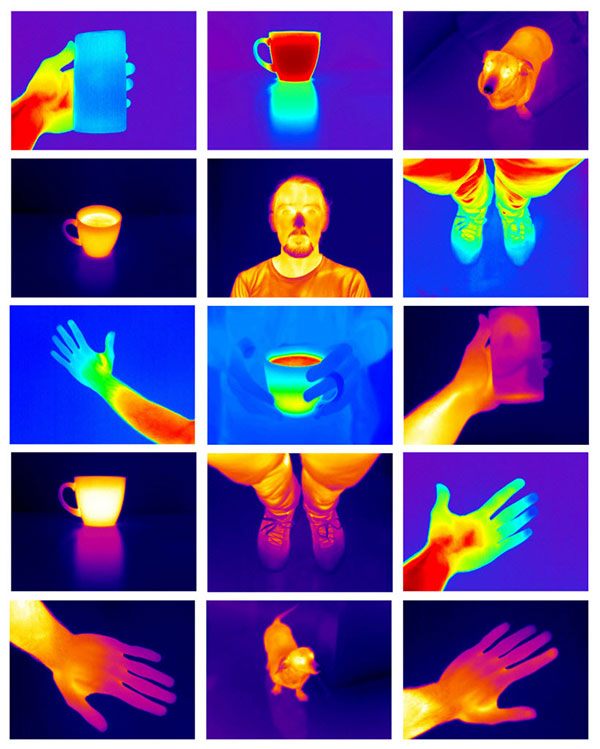How does a thermal camera work?
Thermal cameras can see through smoke and many other obstructions to detect heat sources to help firefighters and police rescue victims.
What is a thermal camera?
Thermal cameras, also known as infrared cameras, thermal imaging cameras, infrared thermometers , are devices that use infrared radiation to create thermal images, similar to those used by normal cameras. light for making photos. Unlike normal thermal cameras operating at 400-700 nm, thermal cameras operate at wavelengths up to 14,000 nm.
How the thermal camera works
Infrared energy is only a small part of the electronic spectrum (game rays, X-rays, ultraviolet rays, a thin region of variable light, infrared waves, terahertz waves, microwaves and radio waves). All objects and devices emit a certain black body scatter as a function of their temperature.

Thermal camera works well in environments without light conditions.
The temperature of the object determines whether infrared radiation emits in the form of low or high blackbody radiation. Thermal cameras can capture these radiations similar to normal cameras that capture light. Thermal cameras work particularly well in low light conditions, making them useful for rescue operations in smoky and underground buildings.
Another major difference between thermal cameras and normal cameras is that focus lenses cannot be made from glass. The thermal camera lens is mainly made of materials such as Germanium, calcium fluoride, crystalline silicon due to infrared radiation with a spectrum of 7m to 14m in length. Most thermal camera lenses are covered with an anti-reflection coating, so the relatively high production costs of lenses entail high cost of cameras.
Common thermal camera today
Currently, thermal cameras mainly have monochrome infrared images because the lenses used often cannot distinguish the different wavelengths of infrared radiation. These thermal camera models mainly display images with fake color palettes (rainbow, iron, hot / cold, gray). Changes in color in the display represent a change of signal, instead of being displayed in intensity. This technique is called density cutting.
The color palette in an infrared temperature camera is distinguished as follows, where the highest temperature level is in white images, the average temperature level is displayed in red and yellow, the lowest temperature area is indicated by color. black. The thermal resolution of thermal cameras is much lower than that of optical cameras, the main resolution is only 160 x 120 or 320 x 240 pixels, the more expensive thermal camera cameras use binoculars. 1280 x 1024 pixel resolution.
The difference in temperature between the scene and the sensor may vary by a minute, the difference at the field 1 degree but the temperature sensor only changes by 0.03 ° C. The response time of the pixel is very slow, can be up to tens of milliseconds.
- How the camera works and how to take a nice picture
- Thermal shock: Danger of life when riding in a sunny car
- The 200-gauge radar camera technology is as small as a fingernail
- Scientists Develop Flexible Camera
- This lensless camera is the future of photography
- Successfully manufactured the world's first 'thermal energy battery'
- Camera based on insect eyes
- Camera captures the smell
- How to handle thermal shock in cars
- Bubble camera
- The camera can look bent over the corner of the wall
- Revealing the world's fastest camera shooting ... 10,000 billion frames per second
 'Fine laughs' - Scary and painful torture in ancient times
'Fine laughs' - Scary and painful torture in ancient times The sequence of numbers 142857 of the Egyptian pyramids is known as the strangest number in the world - Why?
The sequence of numbers 142857 of the Egyptian pyramids is known as the strangest number in the world - Why? Miracle behind the world's largest stone Buddha statue
Miracle behind the world's largest stone Buddha statue What is alum?
What is alum?